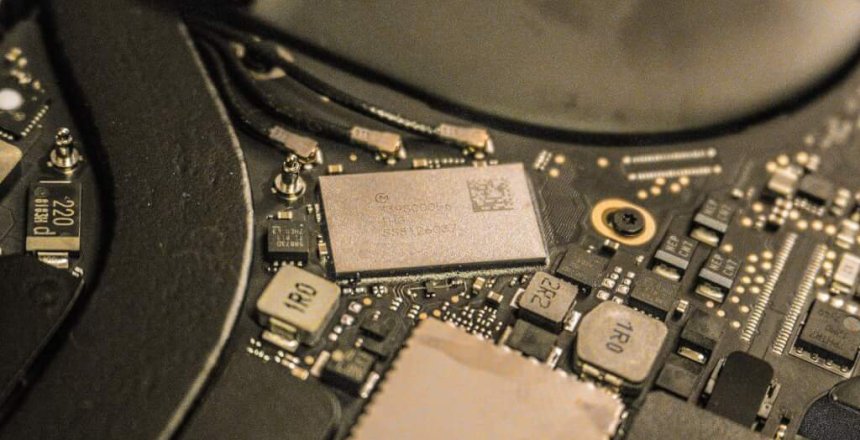Since 2016, Apple has switched to using soldered on SSD storage on all its products, it is understandable for several reasons in terms of speed and availability. It also means that what you buy cannot be easily upgraded. The downside we will cover in this blog post.
SSD death
SSDs don’t last forever, their life is dependent on the amount of data read and written to them and the life is written as TBW (Total Bytes Written – in Terabytes) with the lifespan of a 256GB SSD being 5 years or 150 TBW.
Whenever you write something to an SSD, the capacity is reduced but so is the TBW. When you delete a file, you get the capacity back but the TBW is not increased.
This is why Apple insists you backup using Time Machine and iCloud online storage, because once the TBW runs out on the drive, the SSD will die.
The larger the drive, the longer the TBW will be.
Power regulator death
On every motherboard, power regulators change the distributed power (at 12v) to the power to drive the chips and the processor.
However, regulator chips tend to go wrong and the result is that these sensitive components are irreparably damaged when the wrong voltage passes through them.
Swap
Whenever an operating system runs out of physical memory, it turns to the hard drive to swap programs out of memory to make space and that processing reduces the life of the SSD.
Conclusion
The advantages of soldered on SSDs is great for performance but its built in obsolescence is where the problems lie.
Eventually, the hardware will die either when the TBW runs out or when the power regulator dies and there is no recovering from that except for a new logic board.
Make sure you backup your data regularly to prevent the chances that you will lose your data.

